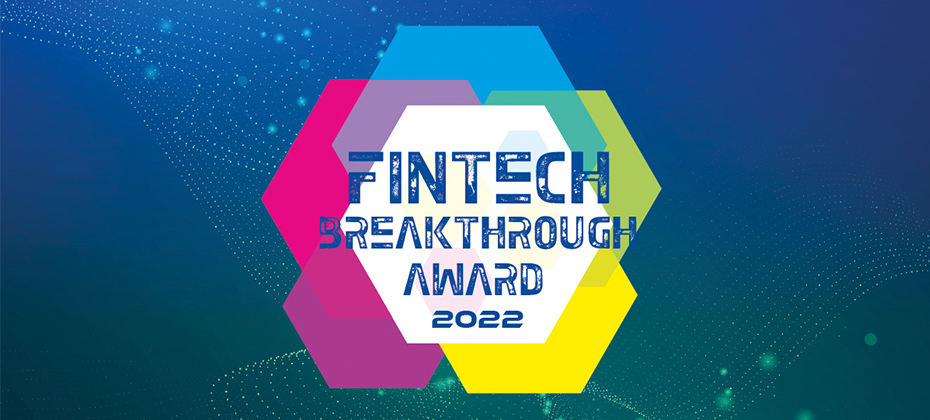Tag: data

Many financial institutions have made inclusion a strategic priority to expand their reach and help more U.S. consumers access affordable financial services. To drive deeper understanding, Experian commissioned Forrester to do new research to identify key focal points for firms and how they are moving the needle. The study found that more than two-thirds of institutions had a strategy created and implemented while one-quarter reported they are already up and running with their inclusion plans.1 Tapping into the underserved The research examines the importance of engaging new audiences such as those that are new to credit, lower-income, thin file, unbanked and underbanked as well as small businesses. To tap into these areas, the study outlines the need to develop new products and services, adopt willingness to change policies and processes, and use more data to drive better decisions and reach.2 Expanded data for improved risk decisioning The research underlines the use of alternative data and emerging technologies to expand reach to new audiences and assist many who have been underserved. In fact, sixty-two percent of financial institutions surveyed reported they currently use or are planning to use expanded data to improve risk profiling and credit decisions, with focus on: Banking data Cash flow data Employment verification data Asset, investments, and wealth management data Alternative financial services data Telcom and utility data3 Join us to learn more at our free webinar “Reaching New Heights Together with Financial Inclusion” where detailed research and related tools will be shared featuring Forrester’s principal analyst on Tuesday, May 24 from 10 – 11 a.m. PT. Register here for more information. Find more financial inclusion resources at www.experian.com/inclusionforward. Register for webinar Visit us 1 Based on Forrester research 2 Ibid. 3 Ibid.

Experian recently announced Experian Identity and published an advertorial in American Banker outlining the integrated approach to identity that recognizes the full breadth of the company’s authoritative data solutions that help businesses better connect with their consumers in more personalized, meaningful and secure ways. The efforts address the rapidly changing definition and landscape of identity and take on the importance and needs for identity which span across the entire customer journey. From marketing to a specific consumer’s needs, to facilitating a friction-right customer experience, to protecting personal information. As such, there’s a gap for single-partner providers to help businesses navigate this change, while also putting the needs of the consumer first. “Identity data sets are constantly growing with inputs from new interactions. Many future sources of data have yet to be even conceived or developed,” said Kathleen Peters, Chief Innovation Officer, Experian Decision Analytics. “Staying ahead of the identity market curve is vital, and it requires building and continually evolving an enterprise-scale identity solution that interconnects with your own unique data and systems to create attribute-rich profiles of your customers that work across any identity application. That’s Experian Identity.” Experian Identity underscores the need businesses have to respond to increasing identity needs with interconnected, scalable technology, products and services that optimize the consumer experience. While the integrated approach announcement is new, the capability is not. Experian has been trusted for decades to secure individuals’ identity around the most important decisions in their lives – think purchasing a car or home, being identified at the doctor’s office, and more. As such, consumers remain at the center of every action. Experian Identity offers identity resolution, verification, authentication and protection, and fraud management solutions that include first- and third-party fraud, account takeover, credit card verification, identity resolution and restoration, risk-based authentication, synthetic identity protection and more. Additionally, we’ve included a special blog post introducing Experian’s identity capabilities from Kathleen Peters on the Experian Global News Blog and additional coverage. Stay tuned for more updates. Experian Global News Blog - Making Identities Personal: Experian Helps Businesses Build Consumer Trust American Banker – Making Identities Personal: Building Trust and Differentiating Your Brand Experian White Paper - Making Identities Personal For more information about Experian Identity, visit www.experian.com/identity-solutions.

“I saw an opportunity to create change instead of asking for it.” Day 2 was charged up with new technology; new ideas; and new, clearer visions of where we can drive change across our industries. Jeff Softley, President, Direct to Consumer, Experian Consumer Services, illustrated how the consumer is at the center of Experian’s business with countless statistics and how our consumer advocacy drives our focus, growth and mission. Wil Lewis, Global Chief of Diversity, Equity and Inclusion; Hiq Lee, President of Business Information Services; and Alex Lintner, Group President, Consumer Information Services, engaged in a panel discussion centered on reimagining inclusion. Keynote: Allyson Felix Allyson Felix, five-time Olympian and most decorated Track & Field athlete, kicked off the day with an inspiring keynote touching on her athletic career, taking challenges head-on and using our platforms to make an impact. Felix, who is racing in the first race of her final season this weekend, is a tireless advocate, life-long learner, who seeks to empower others. “We can all start where we are,” she said. “Small things turn into big things.” Day 2 session highlights From the breakout sessions, the theme of disruption was evident. We dove into how prescreen and prequalification have evolved, a demand that many must adapt to deliver in the post-pandemic world. Financial inclusion was a topic covered across the board, as were the strategies to be enacted to bolster these financial inclusion drivers. One such area addressed was how the rapidly growing buy now, pay later industry advances financial access and inclusion efforts. And speaking of evolution, retention must evolve as well — we heard how retention, recapture and risk strategies are transforming, particularly in the mortgage servicing space. Rapid Model Development and Deployment - Feedback from businesses reflects organizations’ desires for flexible deployment options, flexible integration with existing tech stacks, open source technology and the ability to incorporate multiple data providers. Today’s solutions address that feedback as well as solve for the most rampant market challenges in new, innovative ways. Strategy optimization with Artificial Intelligence and Machine Learning - Over 50% of financial institutions surveyed are using AI/ML in at least one department. Challenges include data management, operation, evolving the analytics program. ML/AI starts with proper data management. For optimization, templatizing ML frameworks is a necessity. ID Verification, Authentication and Fraud - There were $56B in identity fraud losses in 2020, $13B of which were traditional identity fraud losses and $43B related to identity fraud scams. Leveraging strategies is necessary to maintain the critical balance required for identity verification and fraud – mitigating losses and risk exposure, drive optimal customer experience, maintain regulatory compliance. Maximizing Customer Value - The monthly data refresh is a thing of the past. When reimagining account review for risk and marketing purposes, remaining agile is key with increased data freshness for operational efficiency. Keynote: Ashton Kutcher The energy, insights and ideas have been reverberating throughout the venue for the past 48 hours, which set the stage for Ashton Kutcher’s closing keynote. The Chicago Bears fan talked about his career, how hard work wasn’t an option when he was growing up and how part of his assessment process for potential investments – determining whether they create efficiencies in the market – he sometimes thinks of a long-standing, personal benchmark – the air nailer. He talked about his philanthropy efforts, the mission behind his company Thorn, and the ability for people to impact change and achieve "a sense of agency" over the outcome of the future. “That’s the human spirit. That’s the spark that exists – that people understand that you can sit in despair, or you can do something,” he said. It has been an amazing two days – we can’t wait for Vision 2023!

Experian’s in-person Vision conference returns next Monday, April 11 in Los Angeles, Calif. The event is known for premier thought leadership, net-new insights and the latest and greatest in technology, innovation and data science. This year’s agenda promises to have intentional discussions around tomorrow’s trending topics including financial inclusion, buy now pay later, open banking, the future of fraud, alternative data strategies, and much more. A few spotlight sessions include: Top trends including the future application of the cloud and emerging technologies, emerging regulatory legislation and the broader implications and opportunities of DeFi. A deep dive into strategies around the targeting/marketing revolution and how to deliver in the post-COVID-19 market environments and bolster financial inclusion decisions. An introduction to Experian’s Buy Now Pay Later BureauTM, the industry’s first and only solution designed to address the needs of consumers, BNPL providers, financial institutions and regulators alike. A roundup of sessions addressing innovation in action spanning from real-time verifications, to data-driven automation, and unified platforms from data to deployment to decisioning. Several sessions highlighting future-looking strategies and solutions that leverage alternative data that can increase conversion rates while concurrently reducing risk. Multiple sessions centered on the rapidly changing identity environment and combatting emerging fraud threats. The event will also include a Tech Showcase, where attendees can get a taste of tomorrow today with more than 20 demos and the latest innovations at their fingertips. And, as always, the event features marquee keynote speakers sure to inspire. This year’s featured speakers are Dr. Mohamed A. El-Erian, President of Queens’ College, Cambridge, Chief Economic Advisor at Allianz, and Former CEO and Co-Chief Investment Officer of PIMCO; Allyson Felix, Olympic Gold Medalist, co-founder of Saysh, a footwear and lifestyle brand for women, and Right to Play and Play Works ambassador; and the closing keynote will feature actor, investor, entrepreneur and philanthropist, Ashton Kutcher. Stay tuned for additional highlights and insights on our social media platforms throughout the course of the conference. Follow Experian Insights on Twitter and LinkedIn.

At Experian, we know that financial institutions, fintechs and lenders across the entire spectrum – small, medium and large, are further exploring and adopting AI-powered solutions to unlock growth and improve operational efficiencies. With increasing competition and a dynamic economy, AI-driven strategies across the entire customer lifecycle are no longer a nice to have, they are a must. Our dedication to delivering on this need for our clients is why we are thrilled to be recognized as a Fintech Breakthrough Award winner for the fifth consecutive year. Experian’s Ascend Intelligence ServicesTM (AIS) platform hosts a suite of analytics solutions and has been named “Best Consumer Lending Product” in the sixth annual FinTech Breakthrough Awards. This awards program is conducted by FinTech Breakthrough, an independent market intelligence organization that recognizes the top companies, technologies and products in the global fintech market today. This is the second consecutive year that AIS has been recognized with a FinTech Breakthrough Award, previously being selected for the “Consumer Lending Innovation Award” in 2021. “Winning another award from FinTech Breakthrough is a fantastic validation of the success and momentum of our Ascend Intelligence Services suite. Now more than ever, the world is in a state of constant change and companies are being reactive, with data scientists spending too much time on manual, repetitive data-wrangling tasks, at a time when they cannot afford to do so,” said Shri Santhanam, Experian’s executive vice president and general manager of Global Analytics and AI. “Companies need to be able to rapidly develop and deploy ML-powered models in an agile way at low cost. We are now able to offer this to more lenders no matter their size.” With AIS, Experian can empower financial services firms to make the best decisions across the customer life cycle with rapid model and strategy build, seamless deployment, optimization and continuous monitoring. The AIS suite is comprised of two key solution models: Ascend Intelligence Services Acquire is a managed services offering that enables financial institutions to increase approval rates and control bad debt by acquiring the right customers and providing the best offers. This is accomplished through a rapid AI/ML model build that will help better quantify the risk of an individual applicant. Next, a mathematically optimized decision strategy is designed to provide a more granular view of the applicant and help make the best decision possible based on the institution’s specific business goals and constraints. The combination of the AI/ML model and optimized decision strategy provides increased predictive power that mitigates risk and allows more automated decisions to be made. The model and strategy are seamlessly deployed to help deliver business value quickly. Ascend Intelligence Services™ Limit enables financial institutions to make the right credit limit decisions at account origination and during account management. Limit uses Experian’s data, predictive risk and balance models and our powerful optimization engine to design the right credit limit strategy that maximizes product usage, while keeping losses low. To learn more about how Ascend Intelligence Services can support your business, please explore our solutions page. Learn more For a list of all award winners selected for the 2022 FinTech Breakthrough Awards, click here.

There are many facets to promoting a more equitable society. One major driver is financial inclusion or reducing the racial wealth gap for underserved communities. No other tool has impacted generational wealth more than sustainable homeownership. However, the underserved and underbanked home buyers experience more barriers to entry than any other consumer segment. It is important to recognize the well-documented racial and ethnic homeownership gap; doing so will not only benefit the impacted communities, but also elevate the level of support of those lenders who serve them. What are we doing as an industry to reduce this gap? Many organizations are doing their part in removing barriers to homeownership and systemic inequities. In 2021, the FHFA published their Duty to Serve 2021 plans for Fannie Mae and Freddie Mac to focus on historically underserved markets. A part of this plan includes increasing liquidity of mortgage financing for lower- and moderate-income families. Fannie Mae and Freddie Mac each announced individual refinance offerings for lower-income homeowners – Fannie Mae’s RefiNow™ and Freddie Mac’s Refi PossibleSM. Eligible borrowers meet requirements including income at or below 100% area median income (AMI), a minimum credit score of 620, consideration for loans in forbearance and additional newly expanded flexibilities. As part of the plan, lenders will lower a borrower’s monthly payment by at least a half a percentage point reduction in their interest rate, which can translate into hundreds of dollars of savings per month and sustain their homeownership. Experian has the tools to help mortgage lenders take advantage of this offering As a leader in data, analytics and technology, we have the tools needed to help lenders recognize opportunities to be inclusive and identify borrowers who may be eligible for Fannie Mae’s and Freddie Mac’s lower-income refinance offerings. To illustrate, we performed a data study and identified over 6M eligible mortgages nationwide (impacting over 8M borrowers) for this plan, and some lenders had as much as 30% of mortgages in their portfolio eligible with lower- and moderate-incomes.1 These insights can have a positive impact on the borrowers you serve by promoting more inclusion and benefit lenders through improved customer retention, strengthened customer loyalty and an opportunity to continue to build generational wealth through housing. We are committed to enabling the industry's DEI evolution As the Consumer’s bureau, empowering consumers is at the heart of everything we do. We’re committed to developing products and services that increase credit access, greater inclusion in homeownership and narrowing the racial wealth gap. Below are a few of our recent initiatives, and be sure to check out our financial inclusion resources here: United for Financial Health: Promotes inclusion in underserved communities through partnerships and have committed to investing our time and resources to create a more inclusive tomorrow for our communities. Project REACh (Roundtable for Economic Access and Change): brings together leaders from banking, business, technology, and national civil rights organizations to reduce barriers that prevent equal and fair participation in the nation’s economy, and we are engaged with the Alternative Credit Scoring Utility group as part of this initiative. Operation Hope: Empowers youth and underserved communities to improve their financial health through education, so they can thrive (not just survive) in the credit ecosystem so they can sustain good credit and responsibly use credit. DEI-Centric Solutions: From Experian Boost to our recent launch of Experian Go, we offer a variety of consumer solutions designed to empower consumers to gain access to credit and build a brighter financial future. What does this mean for you? Our passion, knowledge and partnerships in DEI have enabled us to share best practices and can help lenders prescriptively look at their portfolios to create inclusive growth strategies, identify gaps, and track progress towards diversity objectives. The mortgage industry has a unique opportunity to create paths to homeownership for underserved communities. Together, we can drive impact for generations of Americans to come. Let’s drive inclusivity and revive the American dream of homeownership. 1Experian Ascend™ as of November 2021

Reporting positive rental payment histories to credit bureaus has been in the news more than once in recent months. In early November, Freddie Mac announced it will provide closing cost credits on multifamily loans for owners of apartment properties who agree to report on-time rental payments. In July, California began requiring multifamily properties that receive federal, state or local subsidies to offer each resident in a subsidized apartment home the option of having their rental payments reported to a major credit bureau. And while reporting positive rental payments to credit bureaus may not yet be part of the multifamily mainstream, forward-thinking operators have already been doing it for years. Below is a quick primer on this practice and its benefits. Why do renters need this service? A strong, positive credit history is critical to securing car loans, credit cards and mortgages – and doing so at favorable interest rates. Unfortunately, unlike homeowners, apartment residents traditionally have not seen a positive impact on their credit reports for making their rent payments on time and in full, even though these payments can be very large and usually make up their largest monthly expense. In fact, renters are seven times more likely to be credit invisible – meaning they lack enough credit history to generate a credit score – than homeowners, according to the Credit Builders Alliance (CBA). This especially impacts lower-income households and communities of color. Renters make up approximately 60% of the U.S. households that make less than $25,000 a year, while Black and Hispanic households are twice as likely as White households to rent, according to the CBA. Experian is among the organizations working with the Consumer Data Industry Association (CDIA) on the association's Rental Empowerment Project. Through the REP, CDIA and its partner organizations seek to increase the reporting of rental payment history information by landlords and property managers through the development and adoption of a uniform, universal data reporting format for landlords and property managers to use. How does reporting positive rental payments to credit bureaus have an impact on a resident's credit history? The impact on any individual renter will obviously vary because of a wide array of factors. But to get some sense of the potential impact reporting on-time rental payments can have, consider the results of the CBA's Power of Rent Reporting pilot. In that test, 100% of renters who started off with no credit score became scorable at the near prime or prime level. In addition, residents with subprime scores saw their score increase by an average of 32 points. How does reporting positive rent payments benefit rental-housing owners and operators? Reporting positive rental payments provides residents with a powerful incentive to pay their rent on time and in full. And because there’s not a huge percentage of apartment communities currently doing this, helping residents build their credit history in this manner can offer a real competitive advantage. Learn more

It’s time for organizations to harness the power artificial intelligence (AI) can bring to digital identity management – quickly and accurately identifying consumers throughout the lifecycle. The rise in crime The acceleration to digital platforms created a perfect storm of new opportunities for fraudsters. Synthetic identity fraud, stimulus-related fraud, and other types of cybercrime have seen huge upticks within the past year and a half. In fact, the Federal Trade Commission revealed that consumers reported over 360,000 complaints, resulting in more than $580 million in COVID-19-related fraud losses as of October 2021. To protect both themselves and consumers, businesses — especially lenders — will have to find and incorporate new strategies to identify customers, deter fraudsters and mitigate cybercrime. The benefits of AI for digital identity In our latest e-book, we explore the impacts of AI on organizations’ digital identity strategies, including: How changing consumer expectations increased the need for speed The challenges associated with both AI and digital identities The path forward for digital identity and AI How to develop the right strategy Building a solution It’s clear that current digital identity and fraud prevention tools are not enough to stop cybercriminals. To stay ahead of fraudsters and keep consumers happy, businesses need to look to new technologies — ones that can intake and compute large data sets in near-real time for better and faster decisions throughout the customer lifecycle. By using AI, businesses will enjoy a fast and consistent decisioning system that automatically routes questionable identities to additional authentication steps, allowing employees to focus on the riskiest cases and maximizing efficiency. Read our latest e-book to dive into the ways artificial intelligence and digital identity interact, and the benefits a clear identity strategy can have for the entire user journey. Download the e-book

In Experian’s Automotive Market Trends Review: Q2 2021, we looked at the data to better understand EV and internal combustion engine registration trends.

Experian recently announced that it has made the IDC 2021 Fintech Rankings Top 100, highlighting the best global providers of financial technology. Experian is ranked number 11, rising 33 places from its 2020 ranking. IDC also refers to Experian as a ‘rising star.’ The robust data assets of Experian, combined with best-in-class modeling, decisioning and technology are powering new and innovative solutions. Experian has invested heavily in new technologies and infrastructures to deliver the freshest insights at the right time, to make the best decision. For example, Experian's Ascend Intelligence Services™ provides data, analytics, strategy, and performance monitoring, delivered on a modern-tech AI platform. With the investment in Ascend Intelligence Services, Experian has been able to streamline the delivery speed of analytical solutions to clients, improve decision automation rates and increase approval rates, in some cases by double digits. “Recognition in the top 20 of IDC FinTech Rankings demonstrates Experian’s commitment to the success of its financial clients,” said Marc DeCastro, research director at IDC Financial Insights. “We congratulate Experian for being ranked 11th in the 2021 IDC FinTech Rankings Top 100 list.” View the IDC Fintech Rankings list in its entirety here. Focus on Data, Advanced Analytics and Decisioning Creates Winning Strategy for Experian Experian’s focus on data, advanced analytics and decisioning has continued to gain recognition from various notable programs that acknowledge Fintech industry leaders and breakthrough technologies worldwide. Beyond the IDC Fintech Rankings Top 100, Experian won honors from the 2021 FinTech Breakthrough Awards, the 2021 CIO 100 Awards and was most recently shortlisted in the CeFPro Global Fintech Leaders List for 2022 in the categories of advanced analytics, anti-fraud, credit risk and core banking/back-end system technologies. “At Experian, we are committed to supporting the Fintech community. It’s great to see our continued efforts and investments driving positive impacts for our clients and their consumers. We will continue to invest and innovate to help our clients solve problems, create opportunities and support their customer-first missions,” said Jon Bailey, Vice President for Fintech at Experian. Learn more about how Experian can help advance your business goals with our Fintech Solutions and Ascend Intelligence Services. Explore fintech solutions Learn more about AIS

The collections landscape is changing as a result of new and upcoming legislation and increased expectations from consumers. Because of this, businesses are looking to create more effective, consumer-focused collections processes while remaining within regulatory guidelines. Our latest tip sheet has insights that can help businesses and agencies optimize their collections efforts and remain compliant, including: Start with the best data Keep pace with changing regulations Focus on agility Pick the right partner Download the tip sheet to learn how to maximize your collections efforts while reducing costs, avoiding reputational damage and fines, and improving overall engagement. Download tip sheet

Lately, I’ve been surprised by the emphasis that some fraud prevention practitioners still place on manual fraud reviews and treatment. With the market’s intense focus on real-time decisions and customer experience, it seems that fraud processing isn’t always keeping up with the trends. I’ve been involved in several lively discussions on this topic. On one side of the argument sit the analytical experts who are incredibly good at distilling mountains of detailed information into the most accurate fraud risk prediction possible. Their work is intended to relieve users from the burden of scrutinizing all of that data. On the other side of the argument sits the human side of the debate. Their position is that only a human being is able to balance the complexity of judging risk with the sensitivity of handling a potential customer. All of this has led me to consider the pros and cons of manual fraud reviews. The Pros of Manual Review When we consider the requirements for review, it certainly seems that there could be a strong case for using a manual process rather than artificial intelligence. Human beings can bring knowledge and experience that is outside of the data that an analytical decision can see. Knowing what type of product or service the customer is asking for and whether or not it’s attractive to criminals leaps to mind. Or perhaps the customer is part of a small community where they’re known to the institution through other types of relationships—like a credit union with a community- or employer-based field of membership. In cases like these, there are valuable insights that come from the reviewer’s knowledge of the world outside of the data that’s available for analytics. The Cons of Manual Review When we look at the cons of manual fraud review, there’s a lot to consider. First, the costs can be high. This goes beyond the dollars paid to people who handle the review to the good customers that are lost because of delays and friction that occurs as part of the review process. In a past webinar, we asked approximately 150 practitioners how often an application flagged for identity discrepancies resulted in that application being abandoned. Half of the audience indicated that more than 50% of those customers were lost. Another 30% didn’t know what the impact was. Those potentially good customers were lost because the manual review process took too long. Additionally, the results are subjective. Two reviewers with different levels of skill and expertise could look at the same information and choose a different course of action or make a different decision. A single reviewer can be inconsistent, too—especially if they’re expected to meet productivity measures. Finally, manual fraud review doesn’t support policy development. In another webinar earlier this year, a fraud prevention practitioner mentioned that her organization’s past reliance on manual review left them unable to review fraud cases and figure out how the criminals were able to succeed. Her organization simply couldn’t recreate the reviewer’s thought process and find the mistake that lead to a fraud loss. To Review or Not to Review? With compelling arguments on both sides, what is the best practice for manually reviewing cases of fraud risk? Hopefully, the following list will help: DO: Get comfortable with what analytics tell you. Analytics divide events into groups that share a measurable level of fraud risk. Use the analytics to define different tiers of risk and assign each tier to a set of next steps. Start simple, breaking the accounts that need scrutiny into high, medium and low risk groups. Perhaps the high risk group includes one instance of fraud out of every five cases. Have a plan for how these will be handled. You might require additional identity documentation that would be hard for a criminal to falsify or some other action. Another group might include one instance in every 20 cases. A less burdensome treatment can be used here – like a one-time-passcode (OTP) sent to a confirmed mobile number. Any cases that remain unverified might then be asked for the same verification you used on the high-risk group. DON’T: Rely on a single analytical score threshold or risk indicator to create one giant pile of work that has to be sorted out manually. This approach usually results in a poor experience for a large number of customers, and a strong possibility that the next steps are not aligned to the level of risk. DO: Reserve manual review for situations where the reviewer can bring some new information or knowledge to the cases they review. DON’T: Use the same underlying data that generated the analytics as the basis of a review. Consider two simplistic cases that use a new address with no past association to the individual. In one case, there are several other people with different surnames that have recently been using the same address. In the other, there are only two, and they share the same surname. In the best possible case, the reviewer recognizes how the other information affects the risk, and they duplicate what the analytics have already done – flagging the first application as suspicious. In other cases, connections will be missed, resulting in a costly mistake. In real situations, automated reviews are able to compare each piece of information to thousands of others, making it more likely that second-guessing the analytics using the same data will be problematic. DO: Focus your most experienced and talented reviewers on creating fraud strategies. The best way to use their time and skill is to create a cycle where risk groups are defined (using analytics), a verification treatment is prescribed and used consistently, and the results are measured. With this approach, the outcome of every case is the result of deliberate action. When fraud occurs, it’s either because the case was miscategorized and received treatment that was too easy to discourage the criminal—or it was categorized correctly and the treatment wasn’t challenging enough. Gaining Value While there is a middle ground where manual review and skill can be a force-multiplier for strong analytics, my sense is that many organizations aren’t getting the best value from their most talented fraud practitioners. To improve this, businesses can start by understanding how analytics can help group customers based on levels of risk—not just one group but a few—where the number of good vs. fraudulent cases are understood. Decide how you want to handle each of those groups and reserve challenging treatments for the riskiest groups while applying easier treatments when the number of good customers per fraud attempt is very high. Set up a consistent waterfall process where customers either successfully verify, cascade to a more challenging treatment, or abandon the process. Focus your manual efforts on monitoring the process you’ve put in place. Start collecting data that shows you how both good and bad cases flow through the process. Know what types of challenges the bad guys are outsmarting so you can route them to challenges that they won’t beat so easily. Most importantly, have a plan and be consistent. Be sure to keep an eye out for a new post where we’ll talk about how this analytical approach can also help you grow your business. Contact us

For credit unions, having the right income and employment verification tools in place helps to create an application process that is easy and low friction for both new and existing members. Digital first is member first The digital evolution created an expectation for online experiences that are simple, fast, and convenient. Attracting and building trusted, loyal relationships and paving the way for new revenue-generating opportunities now hinges on a lender's ability to provide experiences that meet those expectations. At the same time, market volatility and economic uncertainty are driving catalysts behind the need for credit unions to gain a more holistic view of a member’s financial stability. To gain a competitive advantage in today’s lending environment, credit unions need income and employment verification solutions that balance two often polarizing business drivers: member experience and risk management. While verified income and employment data is key to understanding stability, it’s equally important to streamline the verification process and make it as frictionless as possible for borrowers. With these things in mind, here are three considerations to help credit unions ensure their income and employment verification process creates a favorable member experience. The more payroll records, the better Eliminate friction for members by tapping into a network of millions of unique employer payroll records. Gaining instant access into a database of this scale helps enable decisions in real-time, eliminates the cost and complexity of many existing verification processes, and allows members to skip cumbersome steps like producing paystubs. Create a process with high configuration and flexibility Verification is not a one-size-fits-all process. In some cases, it might be advantageous to tailor a verification process. Make sure your program is flexible, scalable and highly configurable to meet your evolving business needs. It should also have seamless integration options to plug and play into your current operations with ease. The details are in the data When it comes to income and employment verification, make sure that you are leveraging the most comprehensive source of consumer information. It’s important that your program is powered by quality data from a wealth of datasets that extend beyond traditional commercial businesses to ensure you are getting the most comprehensive view. Additionally, look to leverage a network of exclusive employer payroll records. With both assets, make sure you understand how frequently the data is refreshed to be certain your decisioning process is using the freshest and highest-quality data possible. Implementing the right solution By including a real-time income and employment verification solution in your credit union’s application process, you can improve the member experience, minimize cost and risk, and make better and faster decisions. To learn more about Experian’s income and employment verification solutions, or for a complimentary demo, feel free to contact an expert today. Learn more Contact us

Establishing a strong digital strategy remains a top priority for most financial institutions. With more eyes on screens and electronic devices, the pandemic-induced shift to digital has increased the need to meet consumers where they are. New Innovations As a Result of an Accelerated Shift to Digital In Ernst & Young’s 2019 biannual Global Fintech Adoption Index, 46% of American respondents indicated they were using at least one fintech service. Fast forward, COVID-19 has accelerated the American adoption rate to 59%, according to a September survey conducted by Plaid, a leading digital payments infrastructure company. This shift to digital also resulted in an uptick in the creation of banking and savings processes that leverage advanced technologies. For example, digital-first technologies and artificial intelligence (AI) are changing the prescreen landscape as never before. For financial institutions, smart prescreen marketing solutions, coupled with a traditional approach to personalized service, present vast opportunities to build deeper consumer relationships. However, implementing an effective strategy can be challenging. In a recent webinar, Experian’s Vice President of Product Management Jacob Kong tackled the topic of using new analytics and AI to create a digital-first strategy. Joined by Mark Sievewright, founder of Sievewright & Associates and co-author of Digital Life, and Devon Kinkead, CEO of Micronotes.ai, they explored the evolution of banking and the possibilities offered by pairing data with technology in our new digital world. Watch the full webinar, 'Digital-First Strategies: New Analytics and Artificial Intelligence for Marketing,' and learn more about: The shift to digital life and banking, new analytics and AI How data and information value empowers prescreen marketing Emerging technologies and new tools that can support aggressive growth and marketing initiatives while mitigating risk How Experian is joining forces with Micronotes.ai to launch Micronotes ReFI powered by Experian, to help lower customers’ or members’ borrowing costs by refinancing mispriced debt Learn more about Micronotes ReFI powered by Experian To explore how Experian’s solutions and capabilities can power your prescreen and marketing strategies, please visit our solutions page or contact us for more information. Contact Us

The tax gap—the difference between what taxpayers should pay and what they actually pay on time—can have a substantial impact on states’ budgets. Tax agencies and other state departments are responsible for helping states manage their budgets by minimizing expected revenue shortfalls. Underreported income is a significant budget complication that continues to frustrate even the most effective tax agencies, until the right tools are brought into play. The Problem Underreporting is a large, complex issue for agencies. The IRS currently estimates the annual tax gap at $441 billion. There are multiple factors that comprise that total, but the most prevalent is underreporting, which represents 80% of the total tax gap. Of that, 54% is due to underreporting of individual income tax. In addition to being the largest contributor to the tax gap, underreporting is also extremely challenging to identify out of the millions of returns being filed. With 85% of taxes owed correctly reported and paid, finding underreporting can be like trying to locate a needle in the proverbial haystack. Making this even more challenging is the limited resources available for auditing returns, which makes efficiency key. The Solution Data, combined with artificial intelligence (AI) equals efficient detection. The problem with trying to detect which returns are most likely to have underreported income is similar to many other challenges Experian has solved with AI. Partnerships between Experian and state agencies combine what we know about consumers with what their agency knows about their population. We can take the data and use AI to separate the signal from the noise, finding opportunities to recoup lost revenue. Read our case study on how Experian was able to help an agency identify instances of underreporting, detecting an estimated $80 million annual lost revenue from underreported income. Download case study Contact us